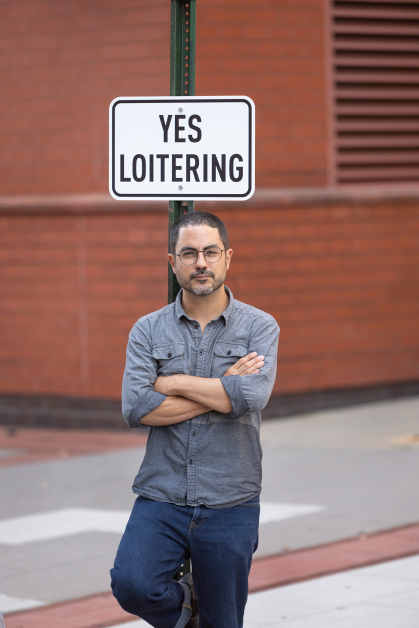Rutgers' New Tepper Chair Wants You to Engage With His Art

Chat Travieso plans to teach students about design and the art of collaborating with the community
Chat Travieso designs engaging, colorful works of art that usually can be found in a park, bus stop or playground – somewhere without any “do not touch” warning signs nearby.
Travieso describes his work as “urban intervention projects” that create spaces for people to gather and linger.
“The work is successful when people are engaging with it whether that’s someone sitting on a bench that I designed, or someone liking the way it looks, or a child finding joy and playing with one of my projects,” he said.
He has been named Tepper Family Endowed Chair in Visual Arts at Mason Gross School of the Arts, beginning this fall, pending approval by the university's Board of Governors. The position, usually a two-year term, was created in 2011, and each Tepper Chair has served to inspire and mentor students in their field of art.
Travieso wants to teach students to get outside of their insulated, academic environment, and to spend time observing, listening and getting the feel for an unfamiliar space. He calls this practice “participatory design.”

“I want the students to understand that they themselves are stakeholders in the world,” he said. “You’re part of a community too; reflect on your community and how you’d might want to engage.”
But he said he will also teach students practical skills they need as designers, such as writing grants, working with commissioners, learning to ask the right questions and identifying the needs of all the users of a space.
“Empathy is a key part of any design process,” he said. “Design is a kind of social practice: You’re thinking about other people, you’re thinking about how someone may be reading that poster or using that chair. You have to put yourself in someone else’s shoes, but whose shoes are you putting yourself in?”
Travieso grew up in Miami, but as a kid he wasn’t unaware of the city’s aesthetics and famous architectural designs. The middle brother to two sisters, he comes from a family of artists. “My dad is an architect; my mom is an artist. It’s funny, I joke that my dad taught me to draw, but my mom taught me how to build things.”
He went to Maryland Institute College of Art, Baltimore, with the intention of becoming a painter, but at some point, started questioning whether that’s what he really wanted to do.
“I still loved painting, but I wanted to do something that was more engaged with people,” he recalls.
He then took a class in urban theory that changed his perspective about cities and spaces within them. “Baltimore is where I learned to love cities,” he said.
It was there he also learned the importance of collaboration in design, to invite and seek input from residents, businesses, and young people in the process.
Travieso has already reached out to organizations in New Brunswick and the university at large for collaboration projects in which students can create new spaces or improve existing ones.
What he teaches in the classroom, Travieso practices outside the classroom with his own work. He works independently, but he is also one half of Yeju & Chat. Since 2013, he has been working with Yeju Choi to create community-based areas of play.
Additionally, since 2017, he has been researching the barriers within cities – whether they be walls, fences, buffers strips, or barricades – built historically to separate Black and white neighborhoods. He documented this work in Places Journal in 2020 in the article “A Nation of Walls.” Travieso began researching these barriers after reading A World More Concrete: Real Estate and Remaking of Jim Crow South Florida. He reached out to the author, N.D.B. Connolly, and learned that there isn’t much documented information on these structures, so he decided to gather his own.
“All design has social impact,” Travieso said. “I want my students to be civically engaged and be conscious of their impact on the world.”


